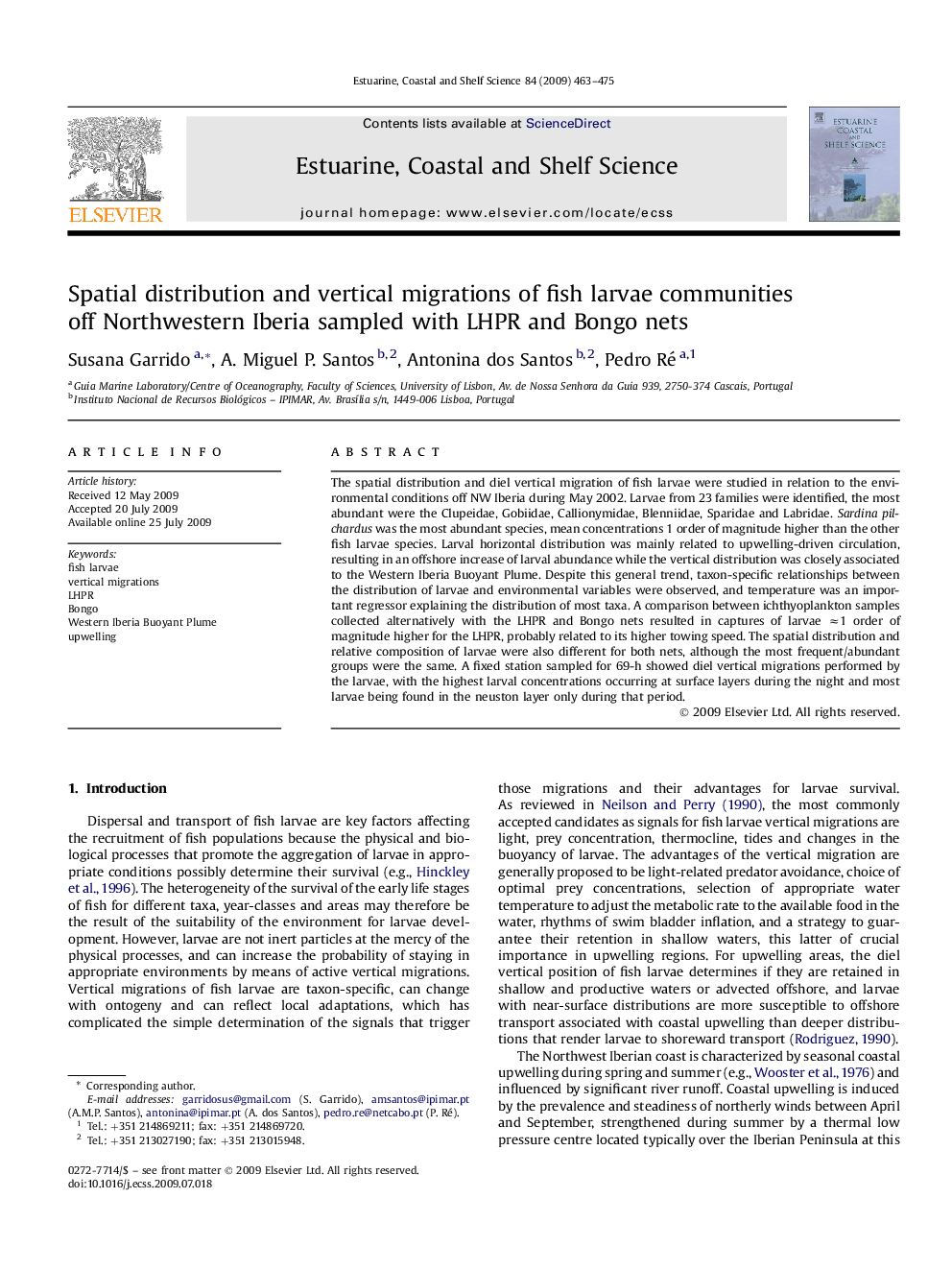| Article ID | Journal | Published Year | Pages | File Type |
|---|---|---|---|---|
| 4541172 | Estuarine, Coastal and Shelf Science | 2009 | 13 Pages |
The spatial distribution and diel vertical migration of fish larvae were studied in relation to the environmental conditions off NW Iberia during May 2002. Larvae from 23 families were identified, the most abundant were the Clupeidae, Gobiidae, Callionymidae, Blenniidae, Sparidae and Labridae. Sardina pilchardus was the most abundant species, mean concentrations 1 order of magnitude higher than the other fish larvae species. Larval horizontal distribution was mainly related to upwelling-driven circulation, resulting in an offshore increase of larval abundance while the vertical distribution was closely associated to the Western Iberia Buoyant Plume. Despite this general trend, taxon-specific relationships between the distribution of larvae and environmental variables were observed, and temperature was an important regressor explaining the distribution of most taxa. A comparison between ichthyoplankton samples collected alternatively with the LHPR and Bongo nets resulted in captures of larvae ≈1 order of magnitude higher for the LHPR, probably related to its higher towing speed. The spatial distribution and relative composition of larvae were also different for both nets, although the most frequent/abundant groups were the same. A fixed station sampled for 69-h showed diel vertical migrations performed by the larvae, with the highest larval concentrations occurring at surface layers during the night and most larvae being found in the neuston layer only during that period.
